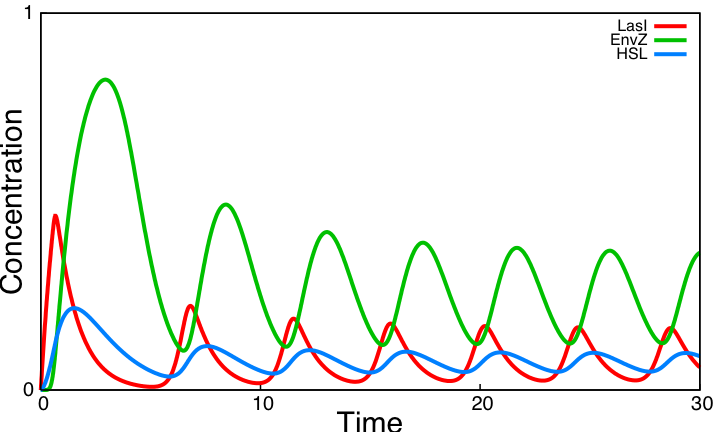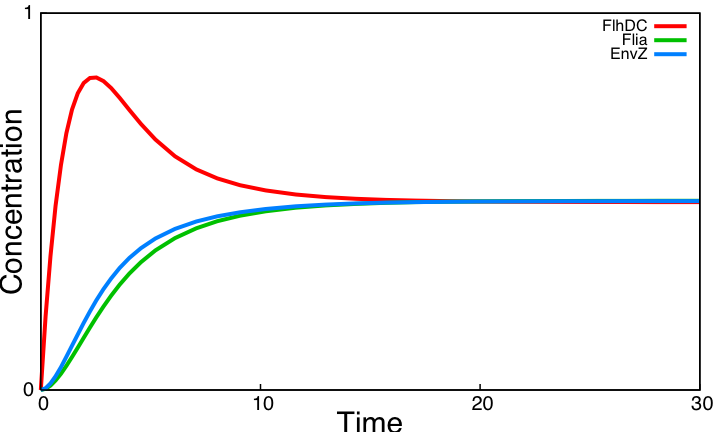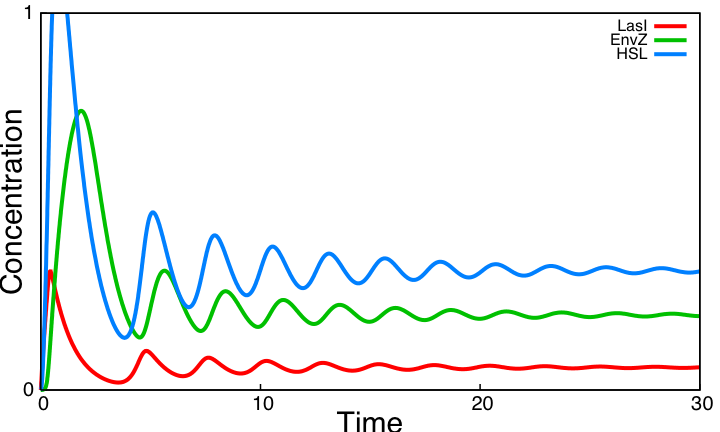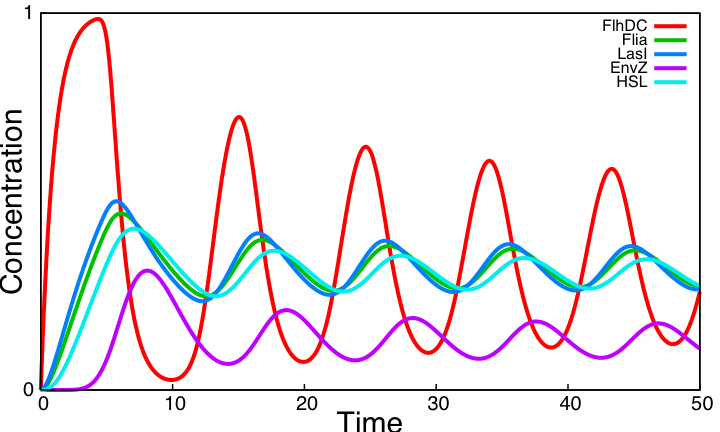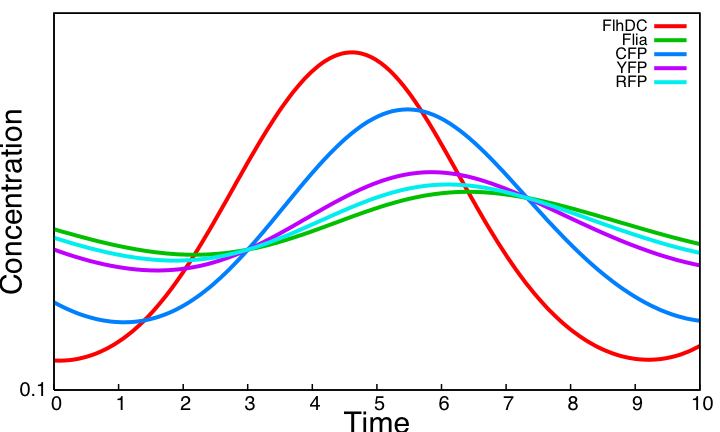Team:Paris/Analysis/Model2 Analysis
From 2008.igem.org
(Difference between revisions)
| Line 6: | Line 6: | ||
==== Parameter search ==== | ==== Parameter search ==== | ||
| - | In this system we rely on kinetic parameter values taken from the literature. However, three kinetic parameters remain unknown : HSL production rate, the threshold value of HSL above which EnvZ is expressed and the threshold value of EnvZ above which lasI is inhibited. We assume, as Ojalvo did, that this loop is functional and thus look for values of these three parameters such that concentration values of species in this loop oscillate. | + | In this system we rely on kinetic parameter values taken from the literature. However, three kinetic parameters remain unknown : HSL production rate (β<sub>HSL</sub>), the threshold value of HSL above which EnvZ is expressed (θ<sub>HSL</sub>) and the threshold value of EnvZ above which lasI is inhibited (θ<sub>EnvZ</sub>). We assume, as Ojalvo did, that this loop is functional and thus look for values of these three parameters such that concentration values of species in this loop oscillate. |
For the HSL production rate we find that HSL time scale has to be similar to lasI time scale, that is the following is required : | For the HSL production rate we find that HSL time scale has to be similar to lasI time scale, that is the following is required : | ||
| - | + | [[Image:betahsl.png|150px|HSL production rate relation]] | |
| - | Besides we observe that the threshold value of EnvZ needs to be low and that the loop is functional for any threshold value of HSL. | + | |
| + | Besides, we observe that the threshold value of EnvZ needs to be low and that the loop is functional for any threshold value of HSL. | ||
For three parameter values validating these requirements, the HSL loop alone has the following behavior : | For three parameter values validating these requirements, the HSL loop alone has the following behavior : | ||
Revision as of 15:54, 28 October 2008
 "
"

